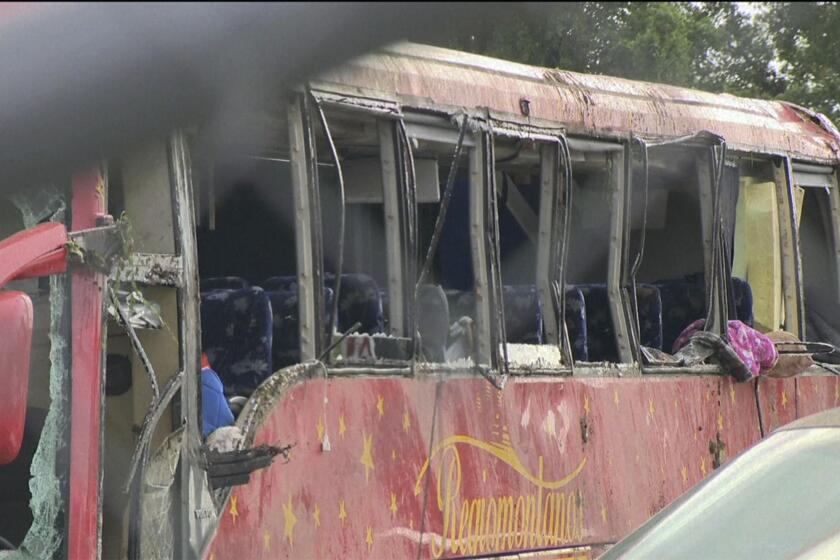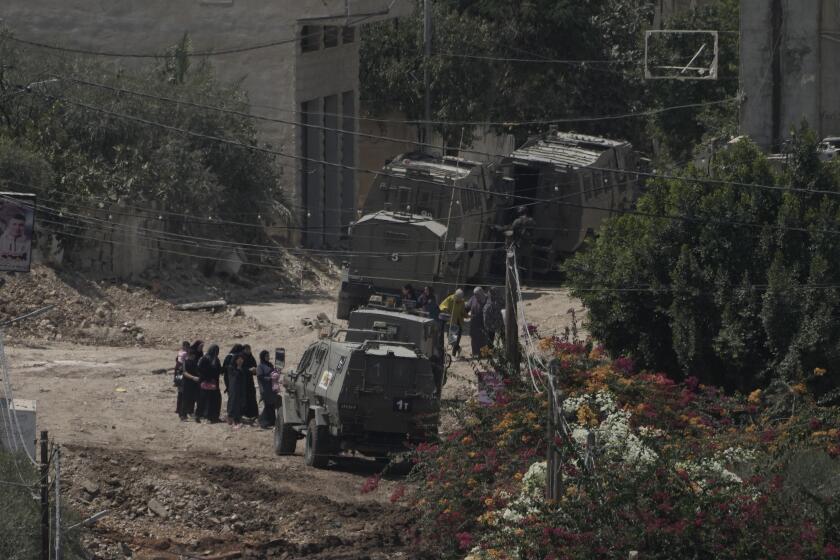U.S. Proposes A-Arms Production Cuts
Predicting a diminished need for nuclear arms in the next century, the Department of Energy on Thursday proposed options to scale down the U.S. nuclear weapons complex and make it more environmentally safe and cost-efficient.
A department study calls for a multibillion-dollar redesign of the U.S. network of weapons factories and associated nuclear reactors. The result will be a nuclear production capability that is “smaller, less diverse and less expensive,” Energy Secretary James D. Watkins said.
The construction necessary to implement the redesign would begin after 1997 and cost between $6.7 billion and $15.2 billion.
The most drastic of four options presented in an 18-month study by the department calls for shutting down all but five of the nation’s 13 nuclear weapons plants and buying non-nuclear parts from private industry. The nuclear weapons complex now spans 12 states and employs more than 100,000 workers.
The study is a major overhaul of a 1988 reorganization proposal that called for spending $81 billion to close, relocate and rebuild the nuclear weapons complex. But the 1988 plan assumed that the United States would need almost as many nuclear weapons as during the chilliest years of the Cold War.
The new proposals call for further reduction and consolidation, since the need for nuclear weapons is considered diminished. The proposals are “consistent with the realities of the emerging international security environment and flexible enough to accommodate the likely range of deterrent contingencies,” Watkins said.
The report assumes that the United States will never again need to produce new plutonium, the manufacture of which stopped in 1988. But the study said that the United States will still need the capacity to recover plutonium from retired warheads and process it for new warheads.
All four options call for keeping open both the Lawrence Livermore National Laboratory, the only such site in California, and the Los Alamos National Laboratory in New Mexico. Energy officials said that it is crucial to maintain the competition between the two research labs.
All of the possibilities call for the permanent shutdown of the Rocky Flats, Colo., plant, which has been temporarily closed since November, 1989, because of mechanical and managerial problems that make it unsafe to operate.
The most drastic option calls for the Energy Department to downscale the nuclear weapons complex over three decades to five plants in Idaho, New Mexico, Nevada, South Carolina and one other state that has not yet been chosen.
This option calls for consolidating the functions of the controversial Rocky Flats plant, the Y-12 uranium plant in Oak Ridge, Tenn., and the main nuclear weapons assembly plant, the Pantex plant near Amarillo, Tex.
Government plants manufacturing electronic and other nonradioactive components for nuclear weapons in Kansas City, Mo., Pinellas, Fla., and Miamisburg, Ohio, also would be transferred to private industry under this plan.
The department also is looking into putting the non-nuclear manufacturing operations at its nuclear plants in South Carolina, Tennessee and Colorado into private hands, Watkins said at a press conference.
All the actions proposed would reduce dramatically the nuclear arms industry, which at its peak operated more than 100 sites in 32 states. Two years ago the industry was down to 17 sites in 12 states.
Since October, 1988, six of the plants built three decades ago have been shut down for safety reasons, two of them permanently.
More to Read
Sign up for Essential California
The most important California stories and recommendations in your inbox every morning.
You may occasionally receive promotional content from the Los Angeles Times.






